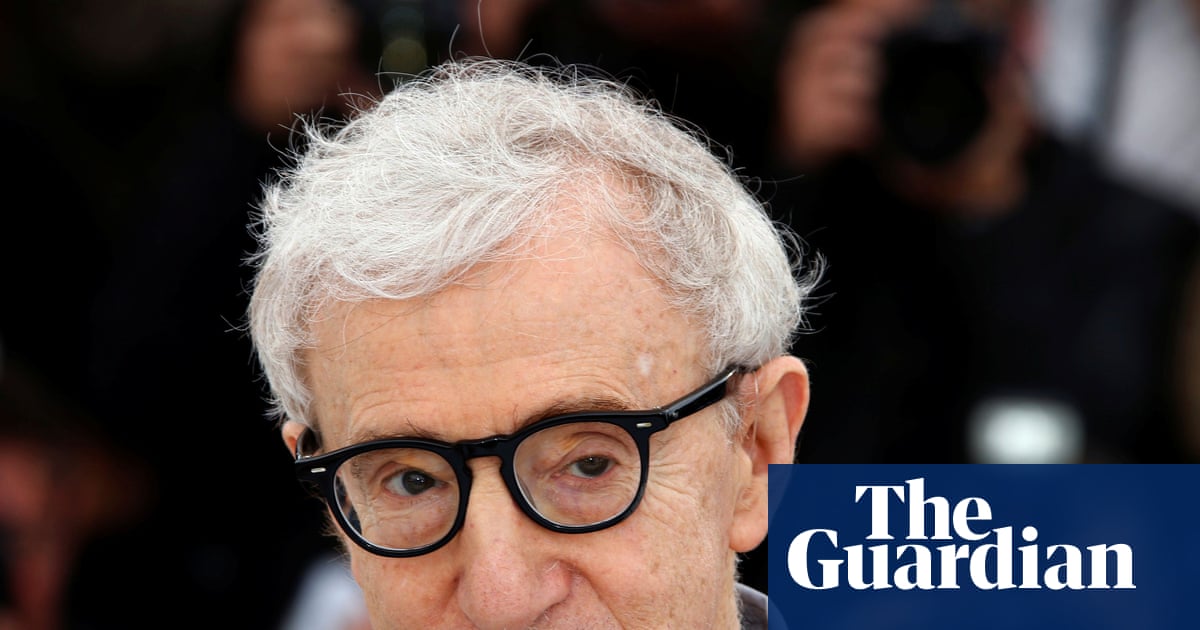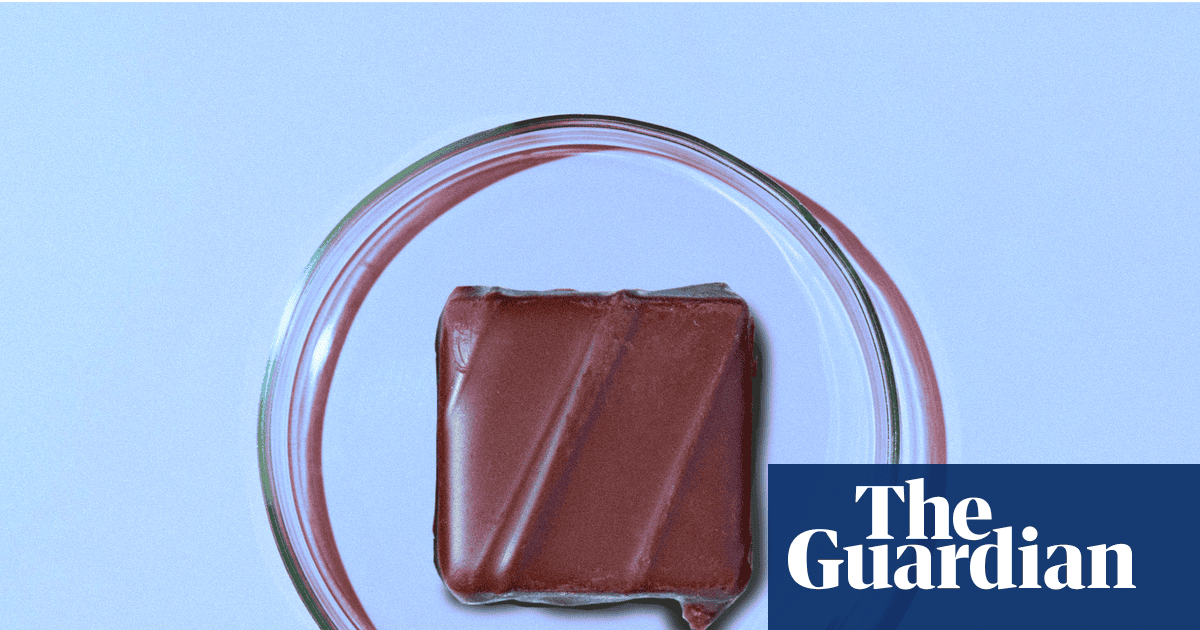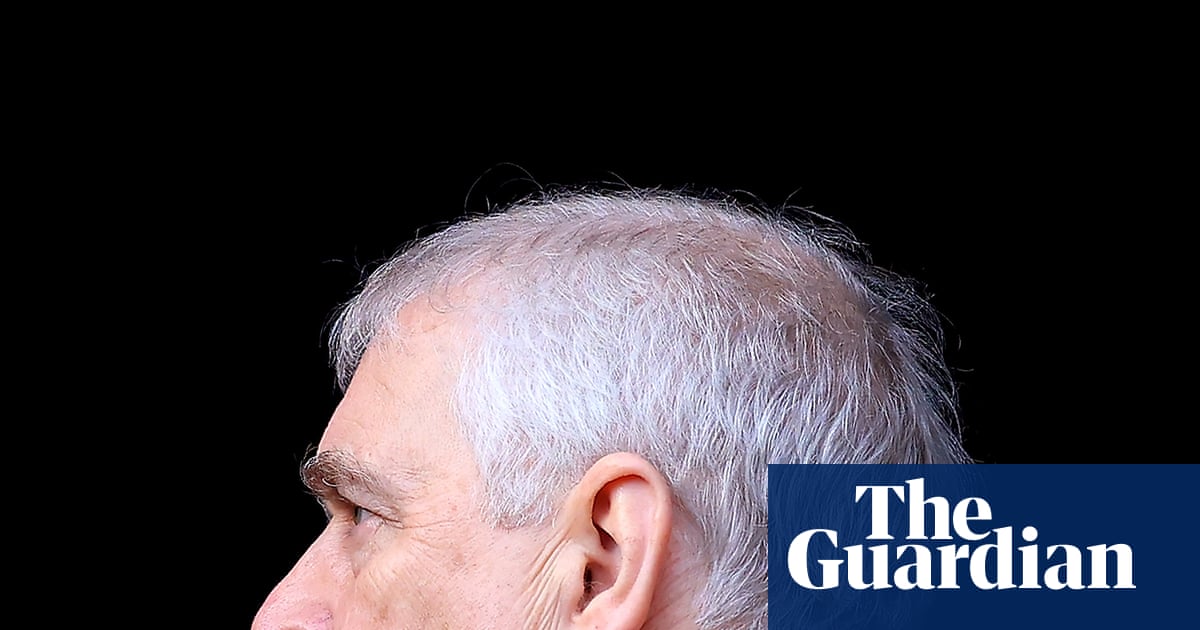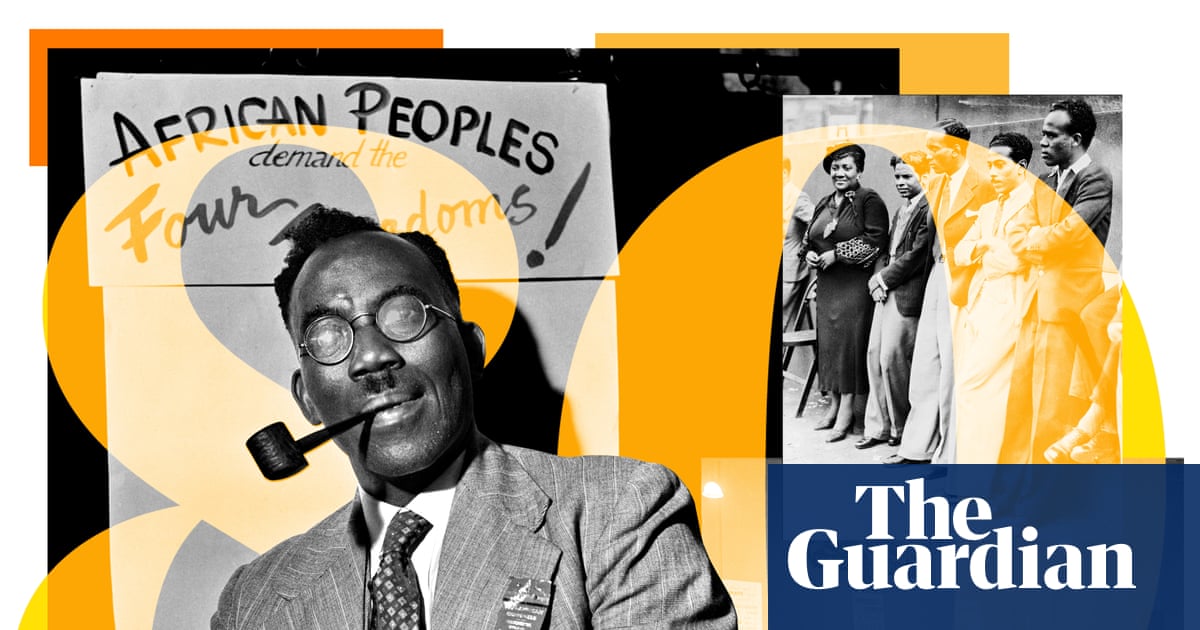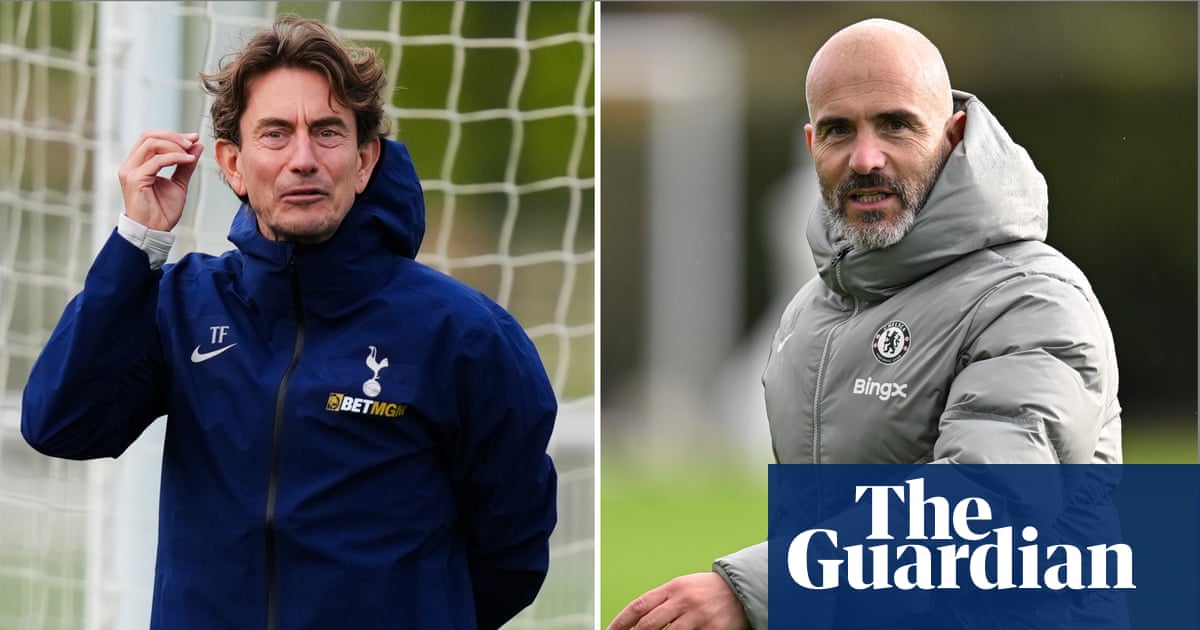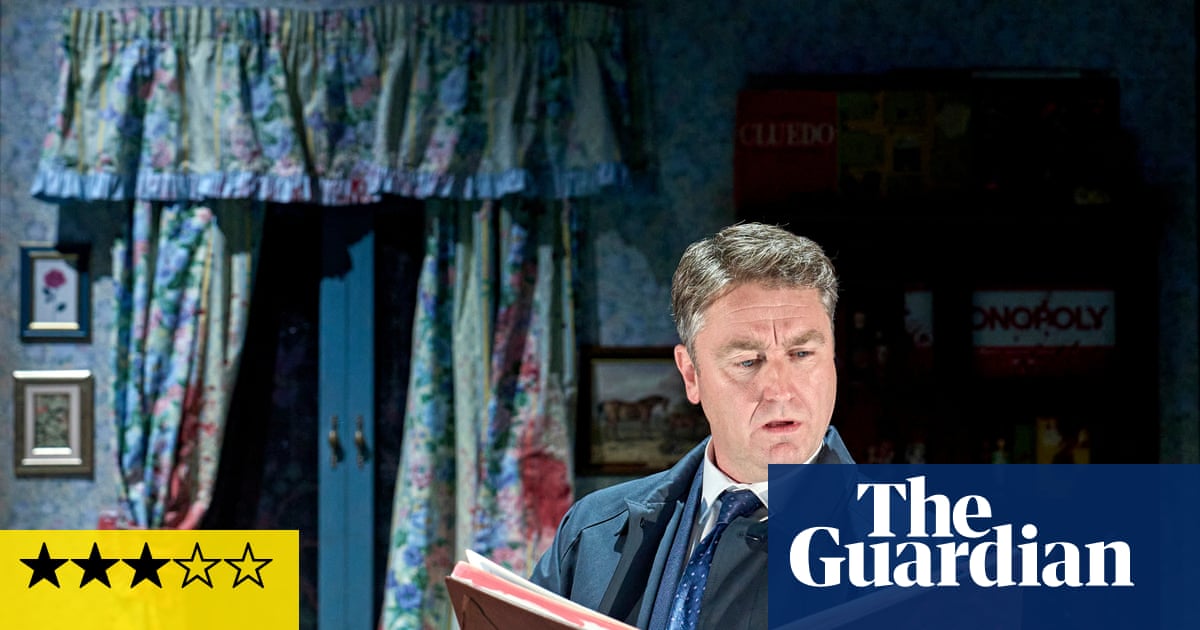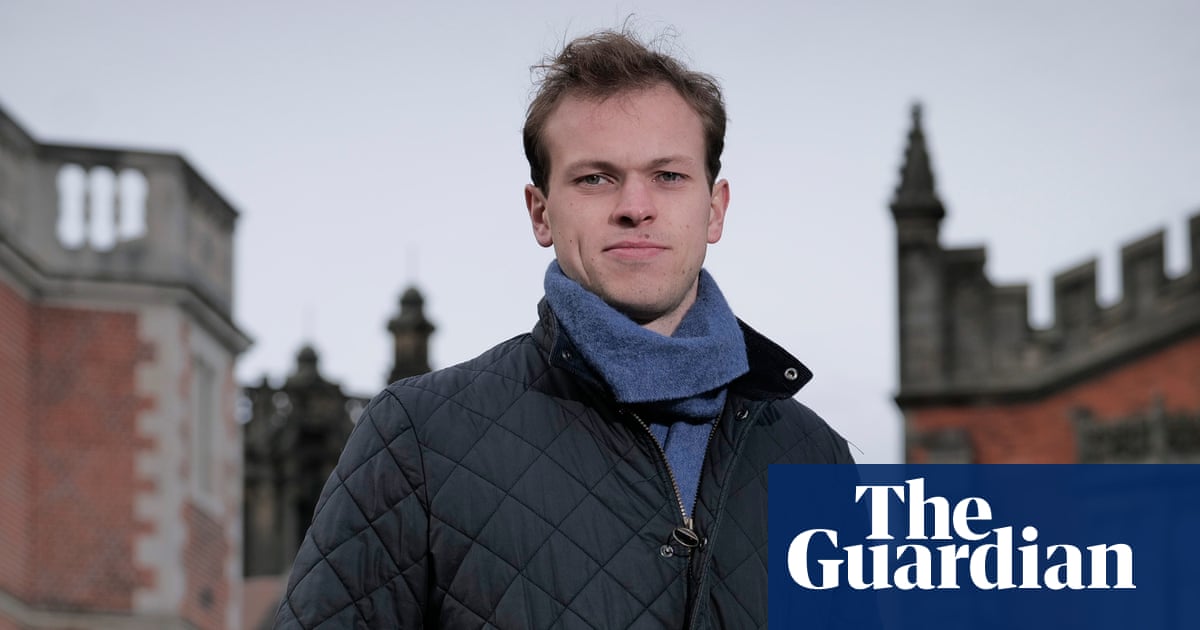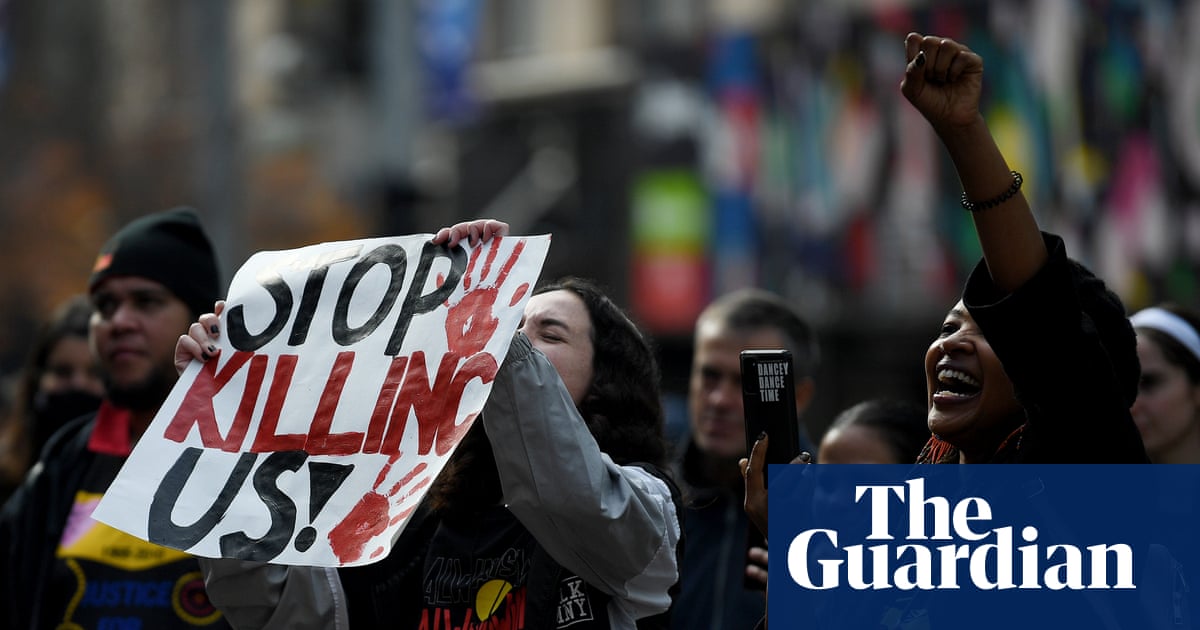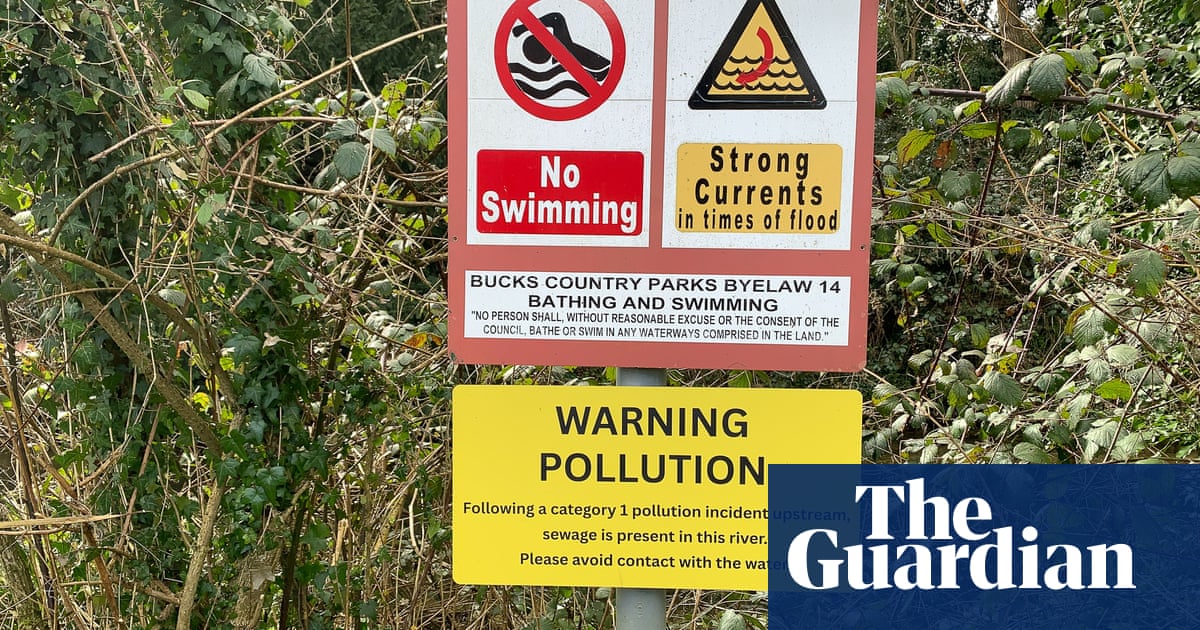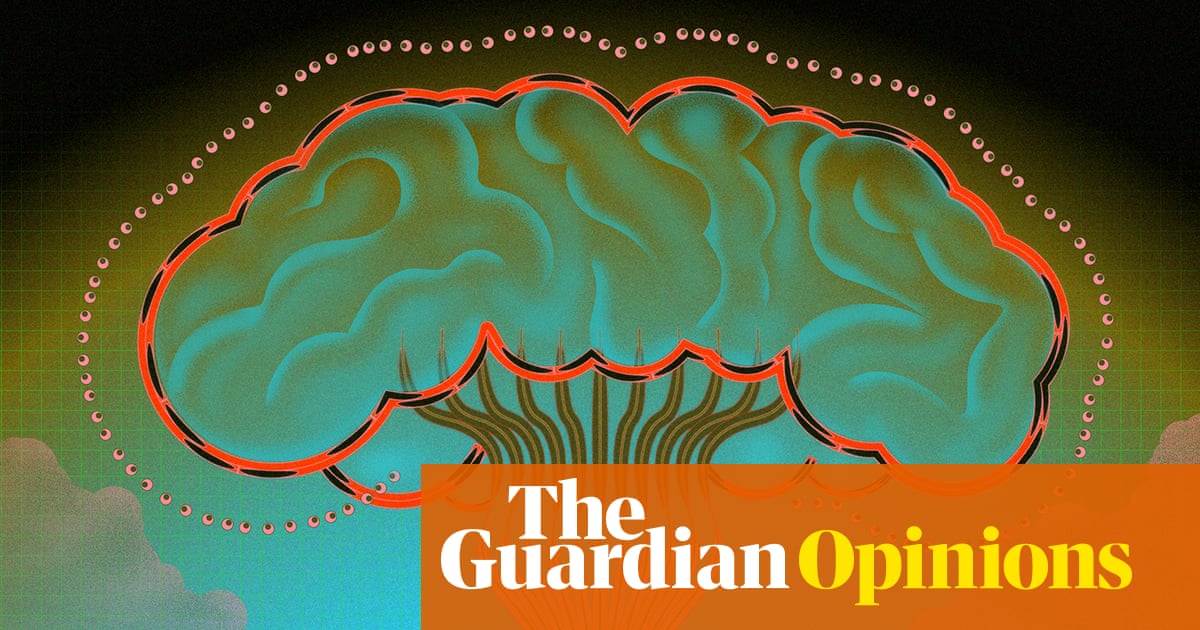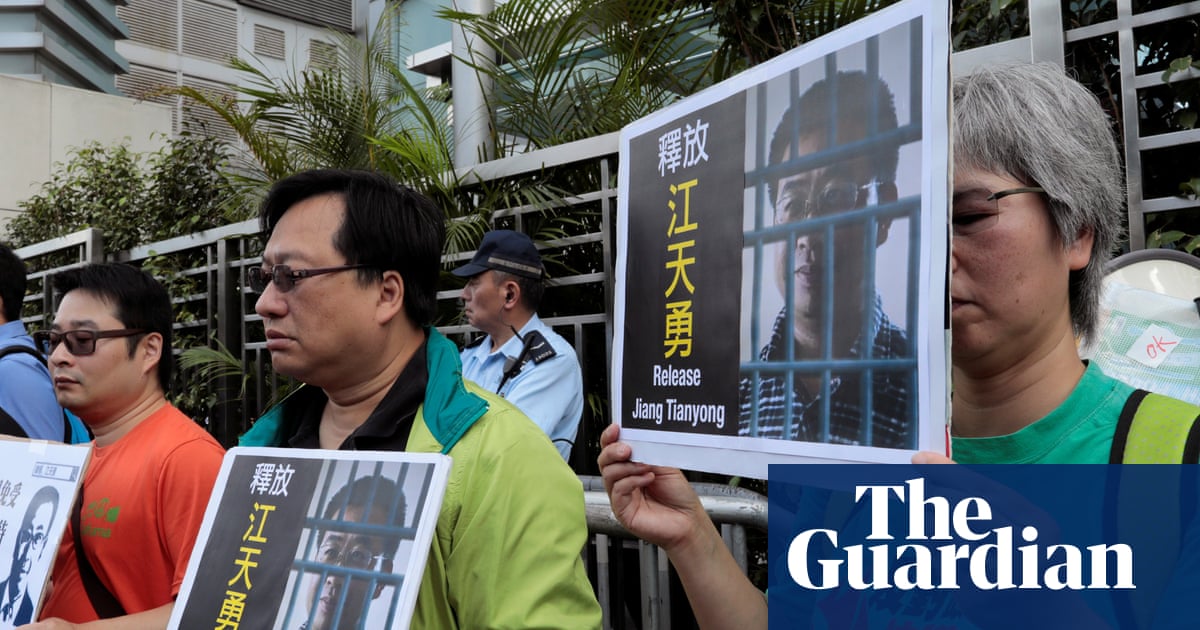The Innocents
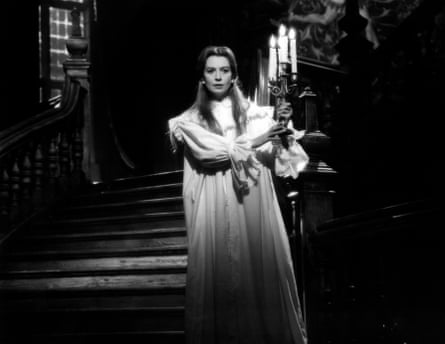
“Sometimes one can’t help … imagining things.” Truman Capote helped to adapt Henry James’s ghost story The Turn of the Screw into 1961’s The Innocents, directed by Jack Clayton, which remains one of the most disturbing of all scary movies. To recall the rush of stomach-twisting fear provoked by this film, I just need one glimpse of the sweating face or shaking hands of Deborah Kerr. She plays a governess to two traumatised children in a remote house where life is so fragile that the petals fall from the roses, mysterious figures appear in the grounds and ominous screeching sounds crack the night. Freddie Francis’s shadowy, black-and-white cinematography, with all those flickering candles, sets a spooky tone, but it’s the soundtrack, using uncanny electronic noises by Daphne Oram, that really needles into your brain. Kerr’s Miss Giddens disintegrates rapidly, unable to trust her own horrifying visions, rapidly suspecting her youthful charges are possessed by evil spirits. “Oh, look, a lovely spider!” exclaims sweet little Flora. “And it’s eating a butterfly.” Pamela Hutchinson
Paranormal Activity
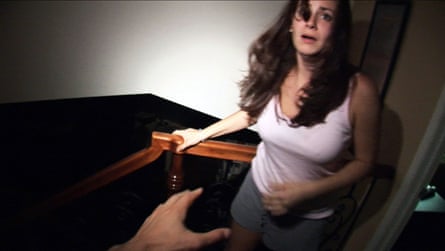
It’s easy to think of Paranormal Activity as the name of a very 15-years-ago franchise, one that reinvigorated the found-footage horror genre a decade after The Blair Witch Project, resulting in six sequels and countless less effective knockoffs. But when I think back to the most intense scares I’ve experienced in the movie theater, Paranormal Activity pops up again. Back in 2009, when it gradually made its way to wide release after a festival debut a full two years earlier, it didn’t have that Blair Witch buzz mistaking its faked footage for the real thing. But Paranormal Activity did update those aesthetics for a time when home cameras had become more prevalent than ever, lending its surveillance-footage showpieces a queasy reality, untethered from “why are they still holding the camera?!” nitpicking. The genius of the movie is how much dread it conjures from so little, forcing the audience to lean forward and examine seemingly uneventful shots of people sleeping for little twitches of supernatural (that is to say, demonic) energy. I had an unlikely knot in my stomach for a surprising amount of the runtime as the movie proved that less could be more terrifying. Possession movies have never really gotten under my skin, not even The Exorcist. But the bump-in-the-night amateur investigation of Paranormal Activity did, and stayed there. Jesse Hassenger
Ringu
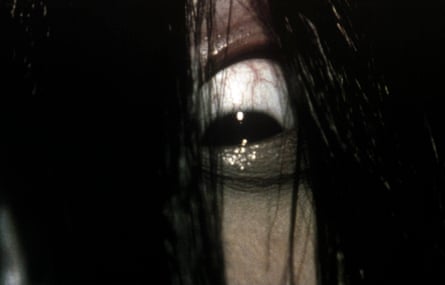
I don’t remember much about first seeing Ringu aside from getting on to the cinema floor so I could get more than just my hands between me and the screen. Since university I’ve seen an awful lot of horror, but on rewatching I can see why this gave me such extreme heebie-jeebies. Hideo Nakata’s sensation about a cursed video tape which gives you a week to live after you watch it has a slow, cold, crisply alien aesthetic to it, all growly sound design and blurred photos and angular overhead shots and a small boy and endless drip-drip silence until A MASSIVE GREAT GHOST LADY CLIMBS OUT OF THE TELLY TO SCARE YOU TO DEATH. There’s also The Scene With the Well, which I can’t write about for wobbling. The section about “brine” and “goblins” hasn’t aged well, especially if you’ve read a lot of Mr Gum, but Ringu is still A-grade unsettling and scary. I saw it again on Tuesday 28 October, at 4.23pm, by the way, just in case, just for reference. Catherine Shoard
From Hell
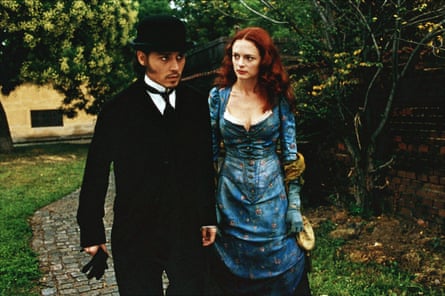
The Hughes Brothers’ grizzly telling of the Jack the Ripper murders is full of shadowy corners, jump scares and an unidentified villain who hunts his victims – in this case sex workers in Whitechapel – decked out in a black cloak and top hat. There are sepia tones and an impressive production design that captures the squalor of 1880s East London. It’s both campy (see Heather Graham’s attempt at a cockney accent), but also genuinely terrifying. Each one of the women is so frequently abused by johns and pimps that the killer hunting them could easily be someone they know. But much of the menace lies in how the Ripper lures them to their death. In one case his henchman plies an unsuspecting victim with grapes and offers her a carriage ride to meet his boss, disguised as a client. Johnny Depp’s haunted inspector protagonist is a more dishevelled and jaded version of his Ichabod Crane, a role he played in Tim Burton’s Sleepy Hollow two years prior to the release of this film. In From Hell, he always seems several steps behind catching the infamous murderer, who was ultimately never discovered after his spree of grim, anatomical killings. Shrai Popat
The Strangers
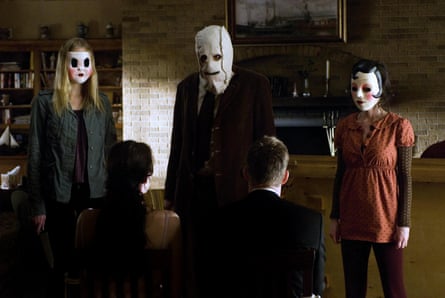
One night a few years ago, my best friend and I stayed at a cabin in the woods in rural North Carolina. All was well, a perfect weekend escape, until her phone went missing. She swore it had just been on the coffee table, but it was gone. Calls straight to voicemail. House eerily quiet. Within minutes, we huddled silently on the couch, and I felt an abyssal dread I haven’t experienced before or since. It was obvious: we were about to die. That things got so dire so quickly – breezing past “maybe you dropped it outside” straight to “axe murderer incoming” – is because of The Strangers, Bryan Bertino’s sadistically scary film starring Liv Tyler and Scott Speedman on the cabin holiday from hell. I only watched the film, partly based on the Manson murders, one time, shortly after its 2008 release. And I never will again, because with ruthless simplicity and arguably the creepiest masks of all time, Bertino tapped into a searing paranoia that apparently remains latent in my system: that you are never safe, evil strangers lurk around the corner, torture need no more justification than “because you were home”. And, crucially, that a missing phone means you’re doomed. Adrian Horton
Midsommar
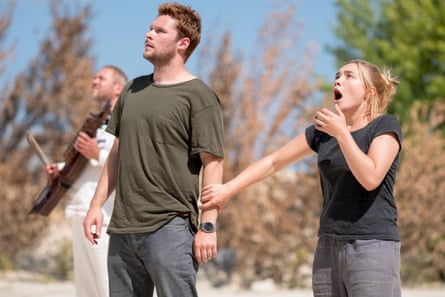
Midsommar isn’t exactly a scary movie in the sense of pummeling viewers with jump scares, or subjecting them to scenes of slow-build anxious tension (although it does offer some of both), but instead it takes us deep into the terrifying terrain that we navigate while struggling to come to terms with a loss too big for the human psyche to bear. Young adult Dani becomes morbidly depressed after her sister Terri ends her life via carbon monoxide, killing her parents in the process, essentially making Dani an orphan in a few dreadful hours. Stuck with a boyfriend who can’t deliver the help she needs, she finds solace in a bizarre, cult-like community in rural Sweden. Ari Aster, the director, is masterful in conjuring truly horrifying scenes of grief and loss, and through the bulk of the movie he explores the befogged state in which grief-stricken individuals attempt to move toward some stable ground. The film is terrifying for daring to take us deep into a part of life that society is largely at pains to avoid as much as possible, showing just how utterly lost, bereft and desperately in need of help any of us could become in an instant. Aster really lets us feel what it is to navigate the passage by which we let go of a cherished past life that tragedy has taken away, while tentatively opening ourselves to the new life that we must somehow learn to accept and inhabit. In so doing, he goes to corners of the human psyche that define so much of our existence, yet that are so fundamentally troubling and untamable. Veronica Esposito
The Shining
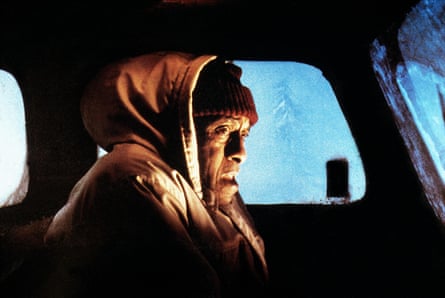
The Shining has one of the lowest body counts for a horror movie – two to be exact. And we’re well past the two-hour mark when the film’s single fatal blow is committed against Scatman Crothers’ Dick Hallorann, the Overlook Hotel’s cook (who, pointedly, also happens to be the only Black character). That’s it. There’s no slasher and precious few jump scares, just a sinister history of violence that haunts a hotel built on Indigenous burial grounds, and Stanley Kubrick’s tyrannical control over our nerves, holding us hostage to every flowing tracking shot, ominous framing and jarring edit. I can’t tell you how many times I’ve watched and rewatched The Shining, following Jack Nicholson’s recovering alcoholic dad as he and his vulnerable family run in circles around the Overlook’s infinite corridors, obsessing over the symmetrical patterns on the walls and the carpets and what meaning they hold, trying in vain to make sense of a movie that refuses comprehension, satisfaction, closure or escape. The Shining is one of, if not the, scariest movies of all time because the fear never subsides no matter how many times we return to it, as if we too are trapped in the Overlook. “Forever and ever,” as those creepy twins say. Radheyan Simonpillai
The Thing

I understand why many might opt for something that’s more recognisably of this world, but while watching John Carpenter’s majestically disgusting sci-fi nightmare The Thing, I’ve always been too immersed in the terrifying urgency of its storytelling to second-guess its realism. It helps that Carpenter, and his note-perfect cast of grim, grizzled men, take everything completely seriously, veering between grave-faced hopelessness and “You gotta be fuckin’ kidding” shock, as a flesh-piercing, shape-shifting alien infects and subsumes their workplace. The shrieking aggression of its pursuit scared me not just for its awful violence (a freakish reinvention of what the human body can do that remains horribly effective – physical effects last, guys!) but for its total unstoppability, a bleak example of how vulnerable our minds and bodies can be when a corruptive and superior force enters. It also fed into something more personal for me, my deep-rooted fears of infection and mutation tied to a real-world fear of contracting HIV at a time when it was less easily managed and even more stigmatised. The Thing might be out of this world, but it found a way to terrorise mine. Benjamin Lee
M
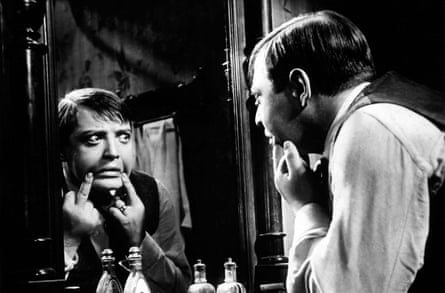
Nobody dies on screen in Fritz Lang’s M, and you don’t even see any blood. Still, believe me when I warn you: watch this one with the lights on. Lang’s expressionist masterpiece about a serial killer and the corrupt police force hunting him down is considered the proto-procedural crime drama. I made the mistake of viewing the thriller in my living room, illuminated only by candles, thinking: It’s from 1931, how scary can it be? Very! In the first shot, German children sweetly sing-song a sinister version of “duck duck goose” – but these lyrics are about an at-large phantom who “chops up” kids. I immediately blew out the candles and turned on the overhead lights. From the start, the film relentlessly indulges in the anticipation of horror, rather than its execution. Viewers end up just as paranoid as the film’s frantic public. Fitting for the time period – M would be the last film Lang, an avowed antifascist, made in Germany before fleeing to Paris and then the US. (As legend goes, Lang left Berlin as a means of turning down Joseph Goebbels’ job offer to lead a film studio that churned out Nazi propaganda.) Alaina Demopolous
The Descent
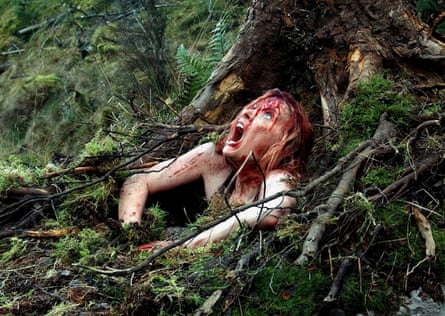
One of the most rational common fears, to me, is claustrophobia. Who wants to be stuck in a tight spot, unable to move? It is also probably reasonable to be afraid of carnivorous, humanoid cave monsters. In 2005’s The Descent, Neil Marshall, the director, brilliantly, dreadfully combines those two frights into the most agonizing – and invigorating – horror film I’ve ever seen. A group of weekend spelunkers, one mourning a terrible loss, ventures into a cave for fun (unhinged) and winds up trapped, forced to confront not only their own demons but also pale, relentless predators lurking in the dark. It’s brutal, bleak and expertly staged, an operatic plunge into a gruesomely palpable nightmare. The film is such a visceral jolt that even talking about it gives me the shivers, 20 years later. Seek it out, if you dare. Richard Lawson

.png) 7 hours ago
5
7 hours ago
5
